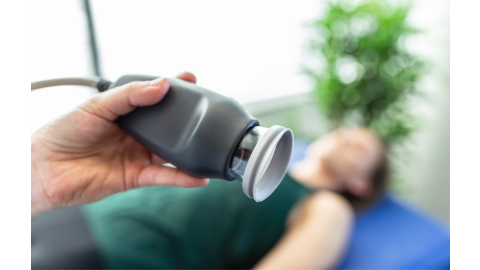If you want to be a police officer, you’ll need to pass a physical fitness test. Are you ready to get into shape? Do you have what it takes to pass?
What is the PAT?
PAT stands for physical ability test. Depending on your area, this physical fitness test may also be called the PTT, POPS, POWER or PAA. The New York Police Department calls it the Job Standard Test.
The test consists of various exercises that assess your physical fitness. Along with other requirements, you must pass the pass/fail test to help determine if you are prepared for the police academy.
The PAT is comprised of different exercises, depending on the city. Most have a running, sit-up, and push-up component, but some are more focused on mirroring the physical requirements of being a police officer. Check with your local precinct to determine what events will be on your PAT.
Exercises to Prepare You for Your Physical Ability Test
While the specific exercises on your test may vary, there are common events. You can work on all of these exercises to improve your overall fitness or focus on the parts that apply to your test.
Running
Many departments have a running portion as part of their test. One and a half miles is a common distance. This test must be completed in the allotted time in order for you to pass. Some departments have one time to beat while others have a sliding scale determined by sex and age. You can start training by walking a mile, working up to two miles. Then move on to walking and jogging, and then just jogging/running. In Chicago, for a 21-29 year old female the maximum time is 16:21 and for a male it is 13:46, the times vary based on age and gender.
Push-Ups
Performing push-ups is another common section of the PAT. Some departments have you do as many push-ups as possible during a timed test (commonly one minute). Others have you continue to do push-ups until the point of failure. In addition to practicing standard push-ups you can practice using looped resistance bands to increase your strength. Use CLX Shoulder Push-Ups to challenge your muscles and prepare for this portion of the test. In St. Paul, the number of push-ups varies from 14-37 depending on the candidate’s age and gender.
Sit-Ups
Sit-up assessments are also common. This typically consists of a one minute timed sit-up test. While training, you can use the same CLX resistance band as you did in the previous exercise. Try TheraBand Abdominal Crunches and TheraBand Oblique Crunches in addition to standard sit-ups. The progressive resistance makes crunches more challenging, building your abdominal muscles and overall endurance. In Chicago, IL, the requirements fall into 8 different levels and range from 13 sit-ups for females over fifty up to 37 sit-ups for males who are 21-29 years old.
Maximum Bench Press
The bench press score is determined by a ratio of weight pushed divided by body weight. Passing involves meeting a minimum score, as a percentage of body weight. On-the-go and looking for an alternative to bench pressing? Try a CLX Chest Press. Be sure to also work the surrounding muscles that assist your pectorals while lifting. You can do resistance band exercises including tricep kickbacks, overhead presses, and chest flies.
Sit and Reach
The sit and reach challenges your flexibility. During this test, you sit on the floor with your legs straight and then bend forward at the waist, stretching to reach your toes or beyond. The score is measured in inches. Prepare yourself with dynamic stretching using the TheraBand Stretch Strap. Sit with your legs extended straight in front of you. Place one end loop around your foot and hold the other end in your hand. Press your foot down against the strap, then pull the strap towards you.
Vertical Jump
A vertical jump measures the height you can jump upward from a standing position. Plyometric exercises, like doing box jumps on a pylobox, use the same explosive movements as your vertical jump. Jump up onto the box and then step back down. Over time, you can increase the height, aim for an inch or two each time, until you reach your goal. In St. Paul, MN, the minimum vertical jump requirement varies from 11.5 to 21.5 inches depending on your age and sex.
Agility
Many police departments also have an event focused on speed and agility. This may involve sprinting down a straight path of a designated length within a certain time limit. Other tests require quickly weaving between cones while you’re sprinting. This mimics chasing a suspect while avoiding obstacles. To prepare, set up a similar course in your own backyard using agility cones.
Looking for an example of a standard physical ability test? Watch this video of the Chicago Police Department POWER test.
The NYPD Job Standard Test and Other Obstacle Fitness Tests
Some departments, like the NYPD, base their physical ability test on functional fitness. So instead of push-ups, the exercises are based on activities that you would be performing in your day-to-day life as a police officer.
The list below includes the six events that make up the NYPD test, which must be completed in four minutes and twenty eight seconds to pass the test. During these events participants wear a weighted vest to simulate the weight of duty belts - so you may want to wear one while you train. Check with your department for more detailed instructions and a list of actions that would result in a disqualification.
Barrier Surmount
What it simulates: Climbing over a fence or other barrier while in pursuit
What you’ll do during the event: The event has you start in a kneeling, weapon-ready position. Then you must sprint 50 feet and climb over a six foot barrier.
How to train for the event: Your best option is to practice on a real six foot wall. You should run to the wall, jump upward catching the top of the wall with your hands, and push up with your arms to get your torso over. Push your legs up and over, hooking one leg over the wall to roll over if necessary. Then swing over and jump down, landing with your knees bent to absorb the shock impact. Adjust your technique as needed, it may be easier to “climb” the wall if the barrier is a chain link fence. Exercises like box jumps with plyoboxes will help you get the height you need when jumping, and dips will give you the arm strength to get over the barrier.
Stair Climb
What it simulates: Running up the stairs when pursuing a suspect or responding to an urgent call emergency (ex. if the incident is in a high rise office building or apartment)
What you’ll do during the event: Go over and back a six-stair climb system three times, the equivalent of a four story climb
How to train for the event: Practicing this portion is easy. Find a staircase and run up and down it. Make sure you hit every step on the descent; steps can be skipped while ascending.
Physical Restraint
What it simulates: Controlling a suspect that is resisting arrest in a physical restraint situation
What you’ll do during the event: This event uses a physical control stimulator (previously called the ‘power training machine’ or pull-push apparatus). You pull a set weight while moving through a 180-degree arc to complete four semicircles. Then use the same movement four times, while pushing on the handle. The machine has fifty pounds of weight on the carriage, translating to an eighty pound weight at the handle.
How to train for the event: Work your pushing and pulling muscles using TheraBand CLX resistance bands. Use pulling motions during scapular retraction and lat pull down exercises. Then strengthen your pushing muscles using scapular punch, resisted push, and push up resistance band exercises.
Pursuit Run
What it simulates: Chasing a suspect and responding to other emergencies that require running
What you’ll do during the event: Run in a triangle pattern around a set of three cones (approximately six hundred feet)
How to train for the event: Use agility cones to practice this event at home. Time yourself so you can try to improve your speed as you get better. Don’t forget, you only have four minutes and twenty-eight seconds to complete the entire test.
Victim Rescue
What it simulates: Moving a victim to a safer location
What you’ll do during the event: Pull a 176 pound mannequin thirty-five feet by dragging it using the attached strap.
How to train for the event: Fill a bag full of weights or tie a rope to a tire or heavy object. Practice dragging the object for at least thirty-five feet.
Trigger Pull
What it simulates: Pulling the trigger and firing a gun
What you’ll do during the event: Pick up an unloaded gun (no firing pin) and hold it within a nine inch diameter metal ring. Pull the trigger sixteen times with your dominant hand, then fifteen times with your non-dominant hand, without the barrel touching the ring.
How to train for the event: This event is usually considered one of the easier test components. You can use a hand exerciser to strengthen your finger before the PAT.
This video is a good starting place for more information on the NYPD’s requirements to enter the police academy. But they aren’t the only department that focuses on functional fitness. You might come across other events on test day, like a vehicle push, walls of various heights, a window climb, a resistance station, or other longer runs.
Watch this video by the Springfield Police Department for one example of a PAT that uses obstacles and other functional exercises, including some that aren’t part of the NYPD’s test.
Are you ready to become a police officer? Follow these exercises so you’re ready to pass the Physical Ability Test and become one step closer to entering the police academy. And once you’re in, check out our top 10 exercises for police officers to stay in shape.
References
City of Chicago. (n.d.). City of Chicago Chicago Police Department Physical Fitness Incentive. Retrieved from https://bit.ly/3n7O7YG
City of St. Paul Government. (n.d.). Description of Police Officer Physical Fitness Tests. Retrieved from https://bit.ly/2H2aE6C
Illinois Law Enforcement Training and Standards Board. (n.d.). Peace Officer Wellness Evaluation Report (POWER) Test Pamphlet. Retrieved from https://bit.ly/2XoIA3b
Illinois State Police. (n.d.). Physical Fitness Requirement. Retrieved from https://bit.ly/1rbaa1m
The New York City Police Department. (n.d.). Attachment A. Retrieved from https://on.nyc.gov/2EfubNY
New York City Police Department. (n.d.). Job Standard Test. Retrieved from https://on.nyc.gov/2NxHbme
Medical Disclaimer: The information provided on this site, including text, graphics, images and other material, are for informational purposes only and are not intended to substitute for professional medical advice, diagnosis or treatment. Always seek the advice of your physician or other healthcare professional with any questions or concerns you may have regarding your condition.








 France
France Australia
Australia






